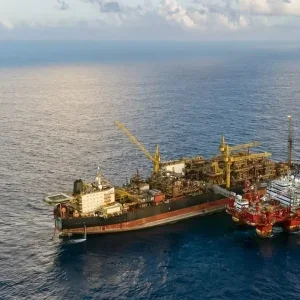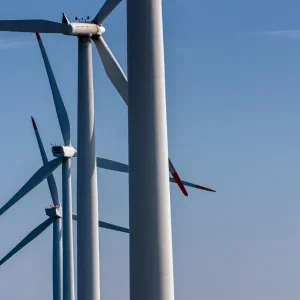Drilling continues on site with the goal of delivering robust mineral resource growth and upgrading inferred resources into the measured and indicated categories under National Instrument 43-101 ("NI 43-101") guidelines.
Highlights (referenced in Figures 1 and 2)
All drill-holes were successful in extending and infilling vein families in the Veta Sur system.
Twelve drill-holes intersected a series of veins located north of the current NI 43-101 block model for the Veta Sur system. These yet unmodeled veins are northeast to southwest striking with dimensions of over 350 metres lateral strike by over 1,000 metres of vertical extent, with the veins remaining open to the northeast along strike and to depth. Select intercepts from a northeast to southwest direction include:
0.5 metres @ 101.5 g/t gold and 20 g/t silver (BUUY149, elevation of 1,133 metres);
2.5 metres @ 12 g/t gold and 37 g/t silver (BUSY353, elevation of 563 metres);
3.3 metres @ 38.7 g/t gold and 9 g/t silver (BUSY357, elevation of 1,010 metres);
0.53 metres @ 129 g/t gold and 11 g/t silver (BUSY357, elevation of 1,033 metres);
5.0 metres @ 27.4 g/t gold and 21 g/t silver (BUSY351, elevation of 1,253 metres);
2.5 metres @ 0.7 g/t gold and 526 g/t silver (BUUY163, elevation of 1,595 metres); and
1.02 metres @ 12.8 g/t gold and 42 g/t silver (BUUY155, elevation of 1,620 metres).
Three drill-holes (BUSY351, BUSY352 and BUSY357) intersected a series of veins located just south of the current NI 43-101 block model for the Veta Sur system. Additionally, drill-hole BUSY354 and channel sampling of the Veta Sur ramp intersected additional veins much further south of the current mineral resource block model and are interpreted to represent a greater than 150-metre step-out along strike of the Laurel vein system within the La Estera Area. Highlighted intercepts include:
0.5 metres @ 32.5 g/t gold and 64 g/t silver (BUSY357, elevation of 1,347 metres);
1.2 metres @ 18.3 g/t gold and 1,868 g/t silver (BUSY354, elevation of 1,687 metres);
1.3 metres @ 28.9 g/t gold and 4 g/t silver (BUSY354, elevation of 1,667 metres);
1.5 metres @ 16.9 g/t gold and 286 g/t silver (Veta Sur ramp, elevation of 1,684 metres); and
1.2 metres @ 4.4 g/t gold and 1,915 g/t silver (Veta Sur ramp, elevation of 1,678 metres).
Elsewhere, several drill-holes extended veins within the Veta Sur mineralized envelope to greater depths than the current mineral resource model, with intercepts including:
0.58 metres @ 77.3 g/t gold and 3 g/t silver (BUSY344, elevation of 702 metres);
2.1 metres @ 30.2 g/t gold and 20 g/t silver (BUSY357, elevation of 1,283 metres); and
2.1 metres @ 33.9 g/t gold and 8 g/t silver (BUUY149, elevation of 1,343 metres);
whereas several drill-holes and near-surface sampling extended veins to higher elevations than in the current mineral resource model, with intercepts including:
1.05 metres @ 79.8 g/t and 280 g/t silver (BUUY167, elevation of 1,697 metres);
4.1 metres @ 65.1 g/t gold and 54 g/t silver (BUUY180, elevation of 1,697 metres); and
1.02 metres @ 53.8 g/t gold and 62 g/t silver (Surface sample, elevation of 1,721 metres).
"Since announcing the first Veta Sur assay results for 2013 on July 9th, both infill and step-out results have exceeded expectations", commented Ari Sussman, CEO. "With an October 31, 2013 cut-off date for final assays ahead of our next mineral resource update in late 2013 or early 2014, we are excited about the potential for infill growth of both measured and indicated resources and overall growth in all categories combined."
Details
Continental’s 100%-owned, 58,773-hectare project, Buriticá, contains several known areas of high-grade gold and silver mineralization, of base metal carbonate-style ("Stage I") variably overprinted by texturally and chemically distinctive high-grade ("Stage II") mineralization. The two most extensively explored of these areas (the Yaraguá and Veta Sur systems) are central to this land package. The Yaraguá system has been drill-outlined along 900 metres of strike and 1,300 vertical metres and partially sampled in underground developments. The Veta Sur system has been drill-outlined along 700 metres of strike and 1,300 vertical metres. Both systems are characterized by multiple, steeply-dipping veins and broader, more disseminated mineralization and both remain open at depth and along strike, at high grades. See "About Continental Gold" below for a précis of the updated mineral resource estimates for the Buriticá project prepared in accordance with NI 43-101. This release documents the results of extension and infill drilling and surface sampling of the Veta Sur system and, to the south of this, underground sampling and drilling in the Veta Sur ramp area.
Four holes were drilled into northeastern Veta Sur: BUSY357 was drilled from the south of Veta Sur and transecting the entire system; BUSY344 and BUSY353 were drilled from the north and intersected Veta Sur approximately 100 metres along strike to the northeast at lower elevations; and BUUY149 was drilled from a pad in central Veta Sur to the northeast and intersected mineralization at higher elevations. High-grade intercepts, over a 550-metre vertical extent, include:
2.5 metres @ 12 g/t gold and 37 g/t silver (BUSY353, elevation of 563 metres);
1.83 metres @ 35.8 g/t gold and 49 g/t silver (BUSY344, elevation of 818 metres);
0.53 metres @ 129 g/t gold and 11 g/t silver (BUSY357, elevation of 1,033 metres);
3.3 metres @ 38.7 g/t gold and 9 g/t silver, including 2.2 metres @ 57.3 g/t gold and 12 g/t silver (BUSY357, elevation of 1,010 metres);
1.0 metres @ 18.7 g/t gold and 33 g/t silver (BUSY357, elevation of 1,008 metres);
0.5 metres @ 101.5 g/t gold and 20 g/t silver (BUUY149, elevation of 1,133 metres); and
0.5 metres @ 22.3 g/t gold and 8 g/t silver (BUUY149, elevation of 1,128 metres).
All intercepts are outside of the current Veta Sur mineral resource envelope and represent the previously unmodeled northern Veta Sur vein families, which remain open to the northeast and to depth. Mineralization is base metal-poor and it is encouraging that high-grade gold values occur within this style of mineralization over such a range of depths.
The northern Veta Sur vein family was cut by eight other drill-holes (BUUY147, BUUY164, BUUY180, BUUY167, BUUY163, BUUY155, BUSY351 and BUSY352) up to 250 metres further southwest (Figure 1), with mostly silver-rich intercepts at relatively high elevations. BUSY351, however, intersected the following broad, high-grade gold interval at lower elevations:
5.0 metres @ 27.4 g/t gold and 21 g/t silver, including 1.1 metres @ 113.1 g/t gold and 68 g/t silver (elevation of 1,253 metres).
Eight drill-holes (BUSY357, BUSY352, BUSY351, BUUY164, BUUY180, BUUY167, BUUY163 and BUUY155) also encountered the most northerly vein families yet drilled in Veta Sur over a strike extent of 300 metres and vertical range of 800 metres (Figures 1 and 2). Intercepts include:
2.5 metres @ 0.7 g/t gold and 526 g/t silver (BUUY163, elevation of 1,595 metres);
0.5 metres @ 0.5 g/t gold and 1,460 g/t silver (BUUY167, elevation of 1,618 metres); and
1.02 metres @ 12.8 g/t gold and 42 g/t silver (BUUY155, elevation of 1,620 metres).
Elsewhere, several drill-holes extended parts of the Veta Sur mineralized envelope to greater depths than the current mineral resource model, with intercepts including:
0.58 metres @ 77.3 g/t gold and 3 g/t silver (BUSY344, elevation of 702 metres);
2.1 metres @ 30.2 g/t gold and 20 g/t silver (BUSY357, elevation of 1,283 metres);
1.68 metres @ 11 g/t gold and 16 g/t silver (BUSY357, elevation of 1,239 metres); and
2.1 metres @ 33.9 g/t gold and 8 g/t silver (BUUY149, elevation of 1,343 metres).
Several drill-holes and near-surface sampling extended several veins to higher elevations than in the current mineral resource model, with intercepts including:
1.05 metres @ 79.8 g/t gold and 280 g/t silver (BUUY167, elevation of 1,697 metres);
4.1 metres @ 65.1 g/t gold and 54 g/t silver, including 1.7 metres @ 131 g/t gold and 66 g/t silver (BUUY180, elevation of 1,697 metres);
1.4 metres @ 34.8 g/t gold and 19 g/t silver (BUUY163, elevation of 1,628 metres); and
1.02 metres @ 53.8 g/t gold and 62 g/t silver (surface sample, elevation of 1,721 metres).
Drill intersections within the current mineral resource envelope are generally consistent with grade X thicknesses of comparable areas of the current mineral resource model. Some intercepts were of significantly higher grades and/or apparent thicknesses, including:
14.7 metres @ 21.4 g/t gold and 50 g/t silver, including 1.65 metres @ 59.6 g/t gold and 112 g/t silver and 1.2 metres @ 108.7 g/t gold and 49 g/t silver (BUSY351, elevation of 1,354 metres);
1.3 metres @ 17.5 g/t gold and 85 g/t silver (BUSY352, elevation of 1,293 metres);
3.5 metres @ 19.2 g/t gold and 29 g/t silver (BUUY147, elevation of 1,716 metres);
3.1 metres @ 15.8 g/t gold and 34 g/t silver (BUUY149, elevation of 1,545 metres);
1.25 metres @ 6.2 g/t gold and 821 g/t silver (BUUY149, elevation of 1,414 metres); and
5.5 metres @ 9.1 g/t gold and 13 g/t silver (BUUY149, elevation of 1,225 metres).
Four drill-holes – BUSY357, BUSY352, BUSY351 and, 150 metres further east, BUSY354 – all intersected multiple veins south of the Veta Sur mineral resource envelope (Figure 1). Highlighted intercepts include:
0.5 metres @ 32.5 g/t gold and 64 g/t silver (BUSY357, elevation of 1,347 metres);
1.2 metres @ 18.3 g/t gold and 1,868 g/t silver (BUSY354, elevation of 1,687 metres);
1.3 metres @ 28.9 g/t gold and 4 g/t silver (BUSY354, elevation of 1,667 metres); and
6.0 metres @ 7.4 g/t gold and 88 g/t silver (BUSY354, elevation of 1,638 metres).
These intercepts in BUSY354 are interpreted to represent eastern extensions of the Laurel vein family of the La Estera Area, 150 metres further northeast than previous drill intersections.
Mapping and sampling of the eastern half of the Veta Sur ramp and nearby access road has revealed gold and silver-rich vein networks, with dominantly ENE- and also NNW strikes, hosted mainly by metasediments. The veins are zinc-rich and typically exhibit high Ag/Au, with some high grades of gold and silver (Table II). Some samples to east of BUSY354 (Figure 1) may correlate with the Laurel vein family of the La Estera Area.
Technical Information
Vic Wall, PhD, special advisor to the Company and a qualified person for the purpose of NI 43-101, has prepared or supervised the preparation of, or approved, as applicable, the technical information contained in this press release. Dr. Wall is a geologist with 35 years’ experience in the minerals mining, consulting, exploration and research industries. Following a career in Australian and North American academes, he held senior positions in a number of multinational major and junior minerals companies. A Fellow of the Australian Institute of Geoscientists, Dr. Wall is Principal of Vic Wall & Associates, a Brisbane-based consultancy that provides geoscientific services to mineral companies and government agencies, worldwide.
The Company utilizes a rigorous, industry-standard QA/QC program. HQ core is sawn or split with one-half shipped to a sample preparation lab in Medellín run by ALS Colombia Limited ("ALS") in Colombia, whereas BQ core samples are full core. Samples are then shipped for analysis to an ALS-certified assay laboratory in Lima, Peru. The remainder of the core is stored in a secured storage facility for future assay verification. Blanks, duplicates and certified reference standards are inserted into the sample stream to monitor laboratory performance and a portion of the samples are periodically check assayed at ACME Analytical Laboratories in Vancouver, British Columbia and/or Inspectorate America Corp. in Reno, Nevada.






